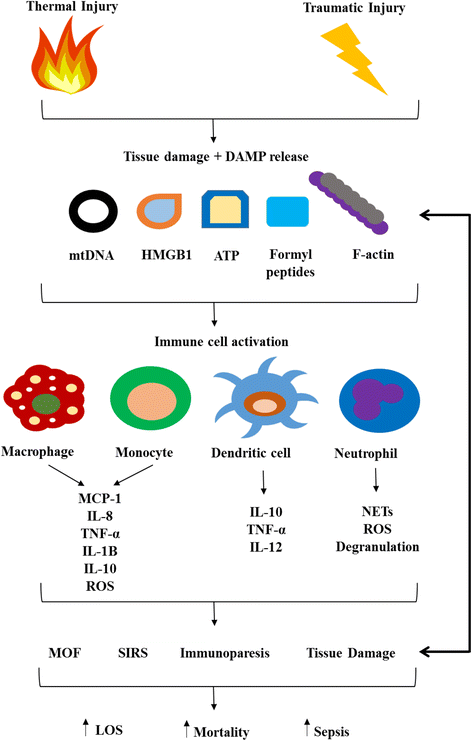The diagnostic and prognostic value of systems biology research in major traumatic and thermal injury: a review
- PMID: 27672669
- PMCID: PMC5030723
- DOI: 10.1186/s41038-016-0059-3
The diagnostic and prognostic value of systems biology research in major traumatic and thermal injury: a review
Abstract
As secondary complications remain a significant cause of morbidity and mortality amongst hospitalised trauma patients, the need to develop novel approaches by which to identify patients at risk of adverse outcome is becoming increasingly important. Centred on the idea that patients who experience "poor" outcome post trauma elicit a response to injury that is distinct from those who experience "good" outcome, tailored therapeutics is an emerging concept aimed at improving current treatment regimens by promoting patient-specific therapies. Making use of recent advancements in the fields of genomics, proteomics and metabolomics, numerous groups have undertaken a systems-based approach to analysing the acute immune and inflammatory response to major traumatic and thermal injury in an attempt to uncover a single or combination of biomarkers that can identify patients at risk of adverse outcome. Early results are encouraging, with all three approaches capable of discriminating patients with "good" outcome from those who develop nosocomial infections, sepsis and multiple organ failure, with differences apparent in blood samples acquired as early as 2 h post injury. In particular, genomic data is proving to be highly informative, identifying patients at risk of "poor" outcome with a higher degree of sensitivity and specificity than statistical models built upon data obtained from existing anatomical and physiological scoring systems. Here, focussing predominantly upon human-based research, we provide an overview of the findings of studies that have investigated the immune and inflammatory response to major traumatic and thermal injury at the genomic, protein and metabolite level, and consider both the diagnostic and prognostic potential of these approaches.
Keywords: Burns; Cytokines; Genomics; Inflammation; Mortality; Sepsis; Trauma.
Figures

References
-
- World Health Organisation. Injuries and violence: the facts. 2014. http://www.who.int/violence_injury_prevention/key_facts/en/. Accessed 9 May 2016
Publication types
LinkOut - more resources
Full Text Sources
Other Literature Sources
Research Materials

